
The project description
PUBLISHED
6 Feb 2024
SERVICES
calendar management/appointment setting
INDUSTRY
Business Consulting
The Chaos Before the Calm
John, a successful entrepreneur, was drowning in a sea of meetings, deadlines, and appointments. His once orderly calendar had become a chaotic mess, filled with double bookings, missed appointments, and little to no time for strategic thinking. He realized he needed help and reached out to me, his Executive Virtual Assistant.
SKILL AREA
92%
Trello
100%
GOOGLE MAIL
90%
GOOGLE CHART
100%
Google Calendar


95%
calendly
tHE PROBLEM
During our initial consultation, John expressed his frustrations. He shared how his business had grown rapidly, but his time management hadn’t kept pace. His biggest challenges were:
- Overlapping meetings
- Lack of preparation time
- Inconsistent follow-ups
- No time for personal commitments
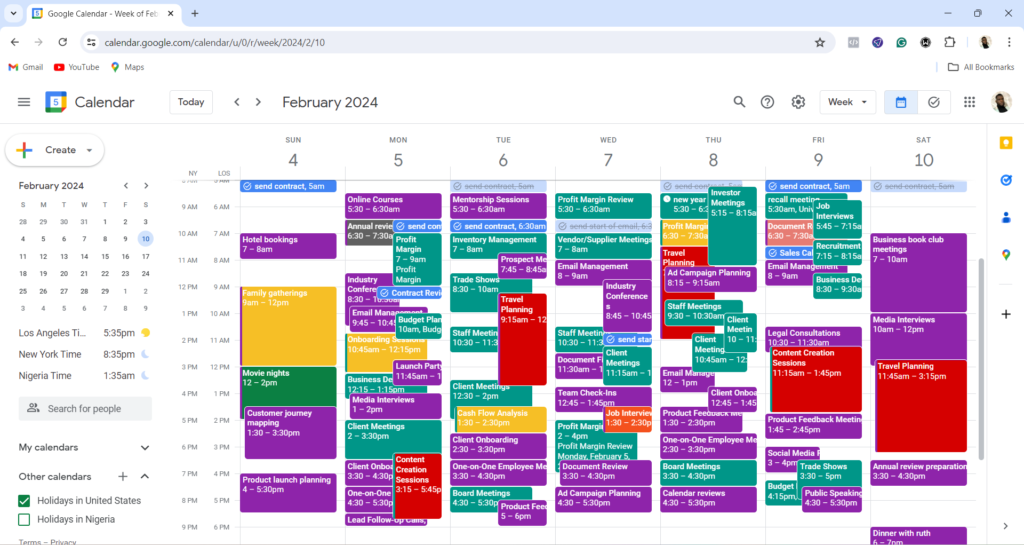
I assured John that i could bring order to the chaos. I began by conducting a thorough audit of his calendar. I identified the most critical issues and proposed a structured approach:
Assessment and Categorization:
I delved into John’s calendar for the past month, uncovering patterns, categorizing his appointments, and pinpointing his top priorities to ensure he stays focused and efficient.
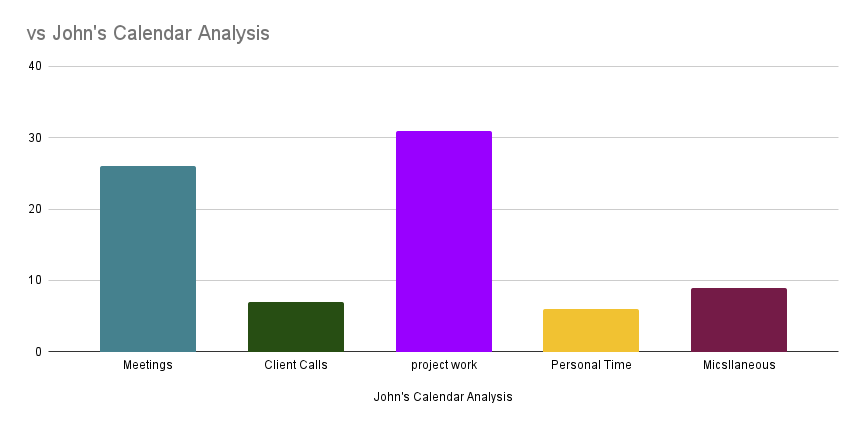
This bar chart titled “John’s Calendar Analysis” shows the distribution of John’s time across five categories: Meetings, Client Calls, Project Work, Personal Time, and Miscellaneous. Here’s a breakdown of each category’s representation:
Meetings:
- Represented in blue.
- John spends approximately 25 units of time in meetings.
Client Calls:
- Represented in green.
- John spends about 10 units of time on client calls, which is the second lowest among all categories.
Project Work:
- Represented in purple.
- John spends the most time here, around 32 units of time.
Personal Time:
- Represented in yellow.
- John allocates about 8 units of time for personal activities, which is the lowest.
Miscellaneous:
- Represented in red.
- This category accounts for roughly 12 units of time.
In summary, John’s calendar is predominantly occupied by project work, followed by meetings, miscellaneous tasks, client calls, and personal time in that order.
SOLUTION
Calendar Optimization
To optimize John’s calendar for better productivity and work-life balance, i considered the following solutions:
1. Prioritize Tasks
- Identify High-Priority Tasks: Ensure that the most critical tasks are given appropriate time slots. This might involve allocating more focused time to project work or high-priority meetings.
- Time Blocking: Dedicate specific blocks of time for focused work on high-priority tasks to avoid interruptions and improve efficiency.
2. Reduce Meeting Time
- Assess Meeting Necessity: Evaluate whether all meetings are essential. Can some be consolidated, shortened, or replaced with emails or quick check-ins?
- Implement Meeting Best Practices: Set clear agendas, start and end on time, and ensure all meetings have defined outcomes.
3. Enhance Client Call Efficiency
- Scheduled Call Blocks: Group client calls into specific time slots to minimize context switching and increase productivity.
- Prepare in Advance: Ensure that all necessary information is ready before the call to make discussions more efficient.
4. Optimize Personal Time
- Regular Breaks: Schedule short breaks throughout the day to prevent burnout and maintain productivity.
- Work-Life Balance: Ensure there’s a clear boundary between work and personal time to enhance overall well-being.
5. Streamline Miscellaneous Tasks
- Task Automation: Identify repetitive tasks that can be automated or delegated to save time.
- Batch Similar Tasks: Group similar miscellaneous tasks together to complete them more efficiently.
6.Automated Reminders
- Integrated his calendar with an appointment-setting tool.
- Set up reminders 24 hours and 1 hour before each meeting.
- Automated follow-up emails after client meetings.
7. Regular Calendar Review
- Weekly Review: Conduct a weekly review of the calendar to identify areas for improvement and adjust as necessary.
- Flexibility: Allow some buffer time for unexpected tasks or delays to prevent the schedule from becoming too rigid.
Sample Reorganized Schedule:
- Meetings: Limit to 2-3 hours per day with a strict agenda and follow-up actions.
- Client Calls: Allocate 1-2 hours per day in designated blocks.
- Project Work: Ensure 4-5 hours of uninterrupted time for deep work on projects.
- Personal Time: Maintain at least 1 hour per day for personal activities and breaks.
- Miscellaneous: Set aside 1 hour per day for miscellaneous tasks, emails, and quick follow-ups.
By implementing these strategies, John’s calendar can become more balanced, productive, and conducive to both professional and personal well-being
Here’s a visual representation of the optimized calendar distribution for John:
- Meetings: 15%
- Client Calls: 10%
- Project Work: 30%
- Personal Time: 20%
- Miscellaneous: 10%
This distribution aims to balance John’s time more effectively, ensuring that project work receives the most focus, meetings are streamlined, client calls and miscellaneous tasks are managed efficiently, and personal time is adequately prioritized for overall well-being.
Suggested John's Weekly Calendar Events
Meetings:
- I Allocated 1-2 hours daily, Monday through Thursday, for engaging and productive meetings. This structured approach optimizes collaboration, decision-making, and progress tracking, ensuring that each day contributes effectively to our goals.
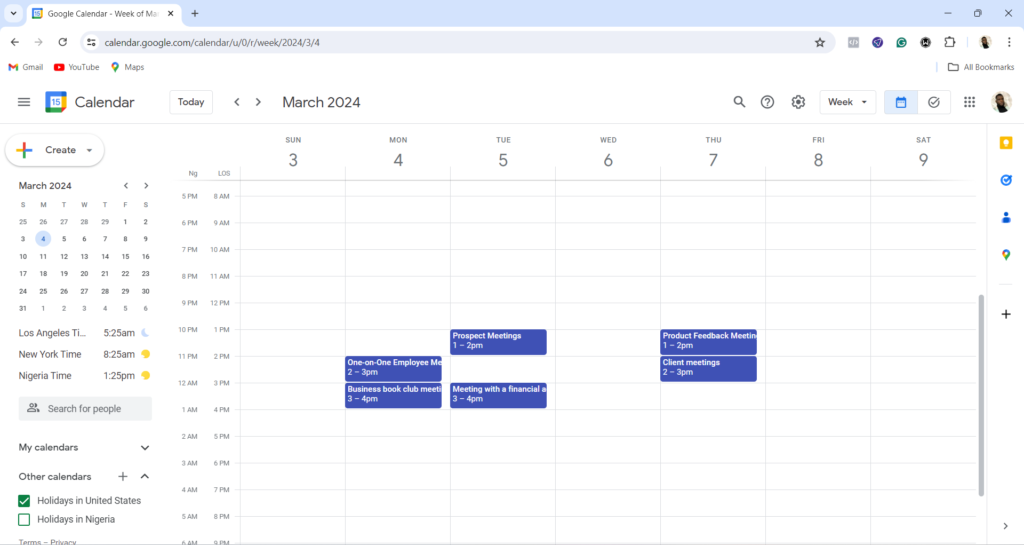
Client Calls:
I reserve 1 hour daily on Tuesdays and Thursdays for client calls. This dedicated time ensures focused and productive conversations, fostering strong relationships and effective communication with clients.
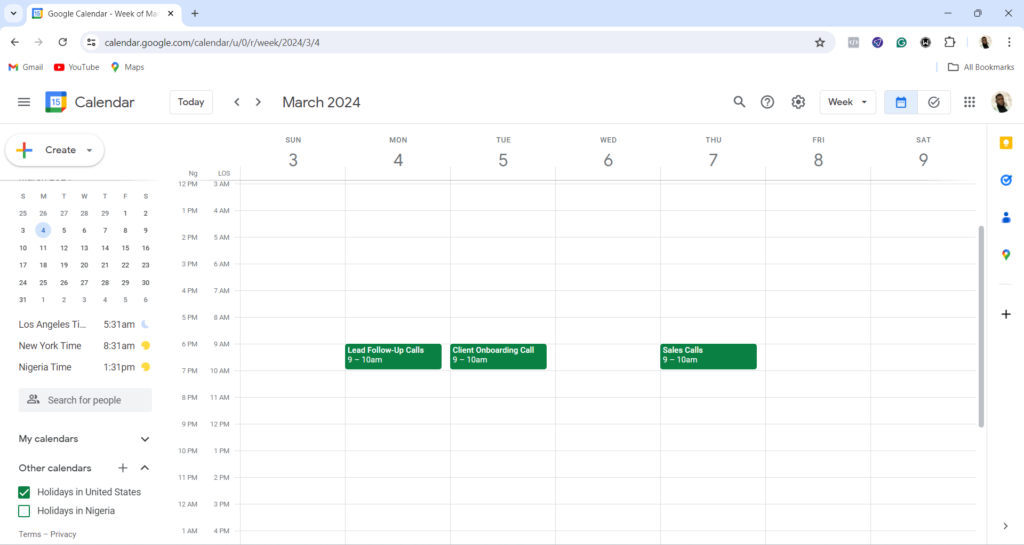
Project Work:
I dedicate 3-5 hours each day to project work, ensuring focused and productive sessions. Wednesdays and Fridays are special focus days, reserved exclusively for deep work and personal tasks. By keeping these days free from meetings, I create a sanctuary for uninterrupted progress and attention to critical appointments. This structured approach empowers my client to achieve more and maintain a healthy work-life balance.
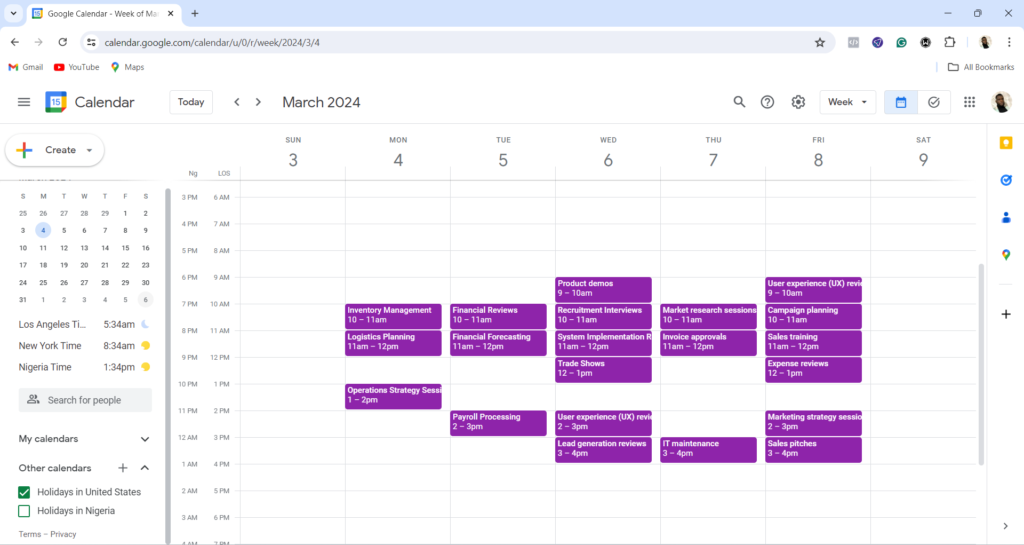
Personal Time:
I carve out 2 hours daily from Monday to Friday for personal rejuvenation and self-care. On weekends, I embrace a more flexible schedule, allowing for spontaneous adventures and relaxation. This balance ensures my client stays energized, focused, and ready to tackle whatever comes his way.
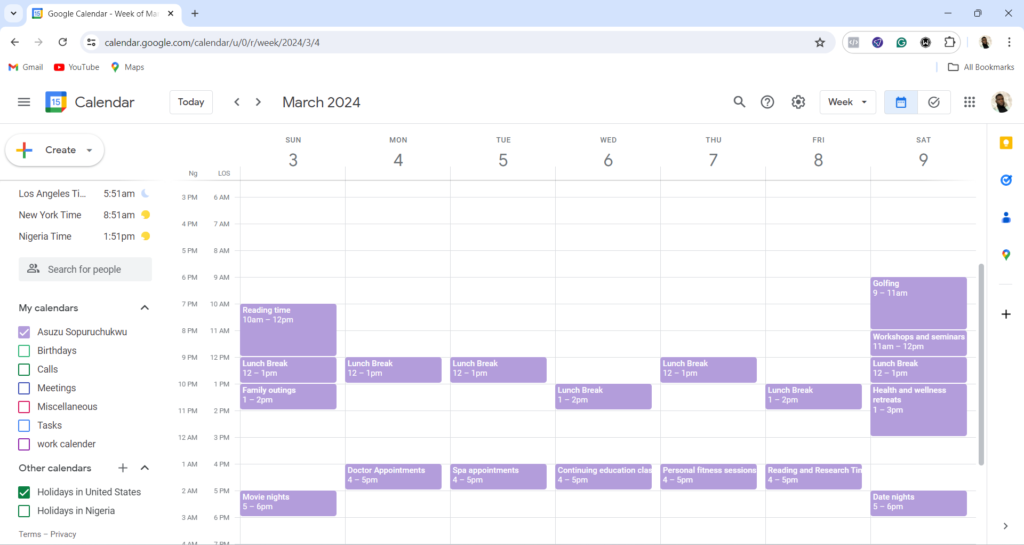
Miscellaneous:
I dedicate 1-2 hours each day, Monday to Friday, to handling miscellaneous tasks. This time is set aside for addressing unexpected needs, tying up loose ends, and tackling any surprises that come my client’s way. This practice helps him stay organized and on top of everything, ensuring no detail is overlooked.

John's Weekly Calendar Events
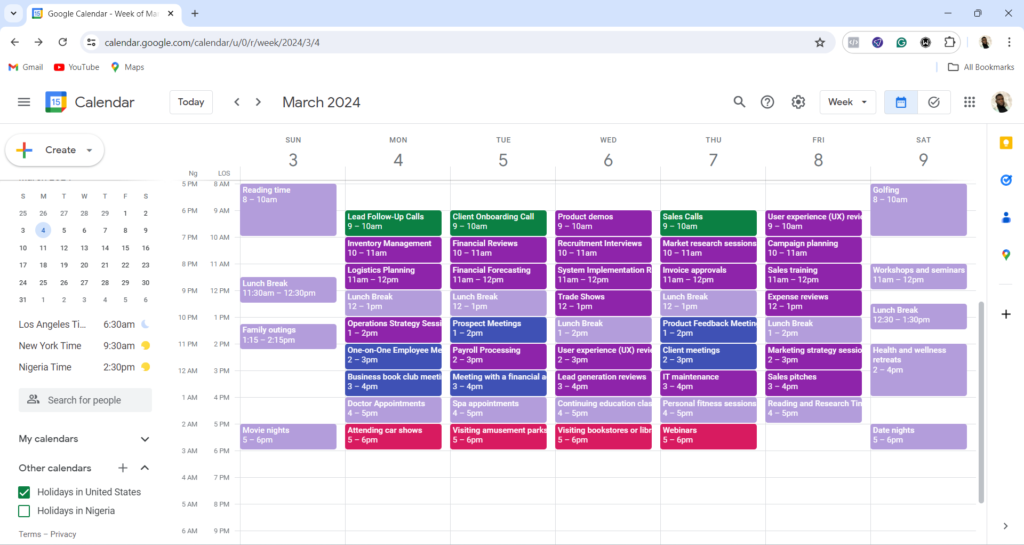
The Transformation
Before
- Overlapping meetings
- Lack of preparation time
- Inconsistent follow-ups
- No time for personal commitments
After
- Meetings no longer overlapped.
- He had dedicated time for strategic thinking and planning.
- Follow-ups were timely and consistent.
- He even found time for personal activities and family.
This structured schedule ensures that John has plenty of dedicated time for project work, while also balancing other essential activities throughout the week. It’s a strategic approach that maximizes productivity and keeps everything running smoothly.
Proud stories
"I was frustrated about my late order, but the prompt and kind resolution turned my experience around!"
"The wrong jersey delivery could have ruined my gift plan, but the quick fix and discount won me over!"